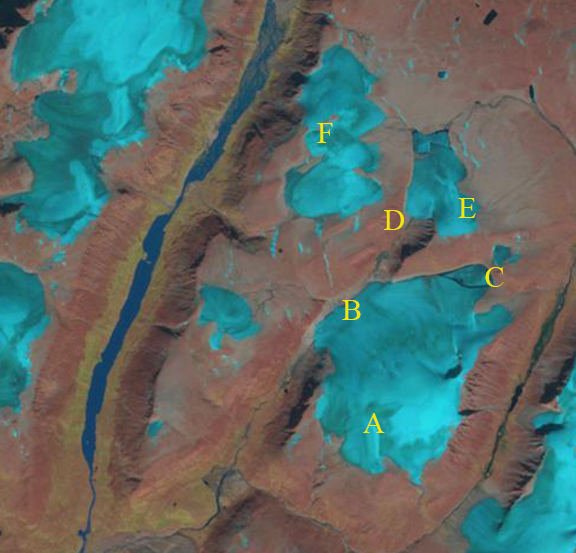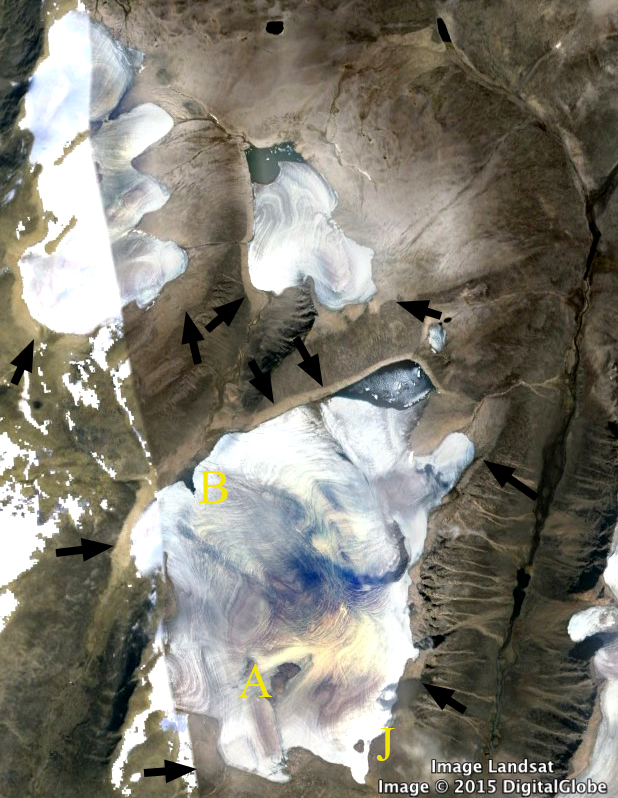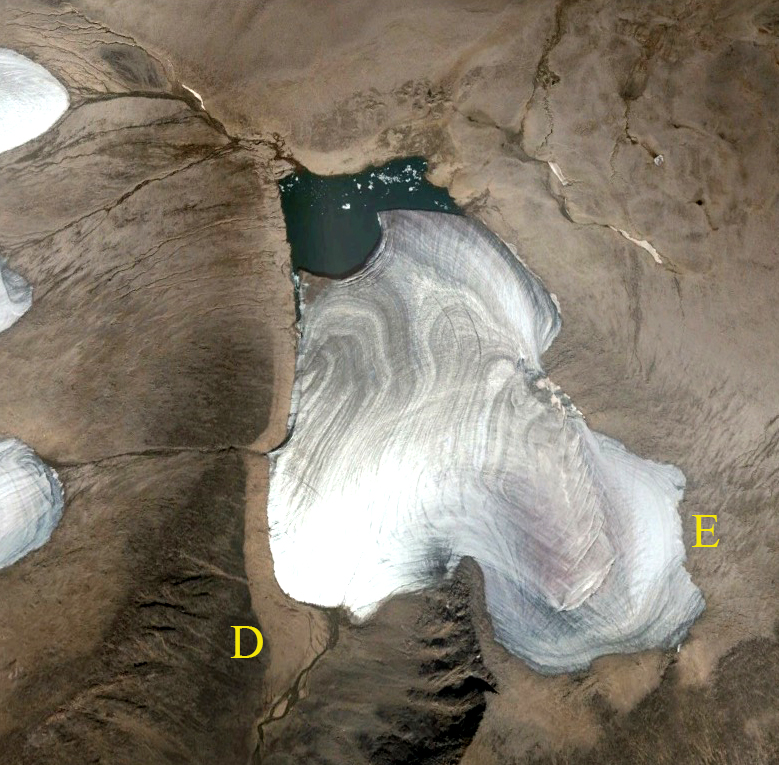July 28, 2015
Auyuittuq National Park Ice Cap Downwasting, Baffin Island
Posted by Mauri Pelto
Just south of the Penny Ice Cap on Baffin Island in Auyuittuq National Park there are a large number of small ice caps. We focus on three of these ice caps east of Greenshield Lake. The region has been experiencing rapid ice loss, with 50 % of the ice cap area lost in the last few decades (Miller et al, 2008). Miller et al (2008) also observe that these are thin and cold glaciers frozen to their beds with limited flow. Way et al (2015) observed the loss of 18-22% of two larger ice caps on Baffin Island, Grinnell and Terra Incognita. The ice cap losses are due to reduced retained snowpack. Zdanowicz et al (2012) found that starting in the 1980s, Penny Ice Cap entered a phase of enhanced melt rates related to rising summer and winter air temperatures across the eastern Arctic. In recent years they observed that 70 to 100% of the annual accumulation is in the form of refrozen meltwater. However, if the snowline rises above the ice cap consistently, as happened at Grinnell Ice Cap than there is no firn to retain the meltwater and superimposed ice formation is limited. Meltwater has difficulty refreezing on a glacier ice surface. The rise in temperature is illustrated by a figure from Way et al (2015), below
Map of region south of Penny Ice Cap from Canadian Topographic maps.
Figure From Way et al; (2015)
In the 1998 Landsat image the two northern ice caps, with E and F on them, have very little retained any snowpack, but significant firn areas. The larger ice cap has retained snowpack adjacent to Point A and considerable firn area as well. There is a trimline beyond the glacier margin apparent west of Point B due to recent retreat, but otherwise trimlines are not immediately evident. In 2000 the two northern ice caps again have very little retained snow, and the larger ice cap retained snow near Point A. In the 2013 Google Earth image black arrows on the image indicate trimlines recently exposed by glacier retreat. There is no evident retained snow, and no retained firn is even evident. This suggests the ice caps lacks an accumulation zone. A close up view, illustrates many years of accumulation layers now exposed, note the linear dark lines, black arrows. The second closeup view illustrates the area around Point E and D that has been deglaciated. There also are some new areas of expanded bedrock such as near Point A on the larger ice cap. The 2014 Landsat image indicates the bedrock has expanded at Point A. At Point B an area of bedrock is expanding into the ice cap. At Point C the lake has expanded at. Ice has melted away from Point D and E. At Point F a new area of bedrock has emerged within the ice cap. At Point J the new bedrock seen in the 2013 Google Earth image has now expanded to the margin of the ice sheet. These changes are a result of a thinning ice cap, largely due to increased ablation. The lack of retained snow cover or firn confirms there is not a consistent accumulation zone and that these ice caps cannot survive current climate (Pelto, 2010).
1998 Landsat image
2000 Landsat image
2013 Google Earth Image
Google Earth Closeup
Google Earth Closeup
2014 Landsat image










 Dean of Academic Affairs at Nichols College and Professor of Environmental Science at Nichols College in Massachusetts since 1989. Glaciologist directing the North Cascade Glacier Climate Project since 1984. This project monitors the mass balance and behavior of more glaciers than any other in North America.
Dean of Academic Affairs at Nichols College and Professor of Environmental Science at Nichols College in Massachusetts since 1989. Glaciologist directing the North Cascade Glacier Climate Project since 1984. This project monitors the mass balance and behavior of more glaciers than any other in North America.